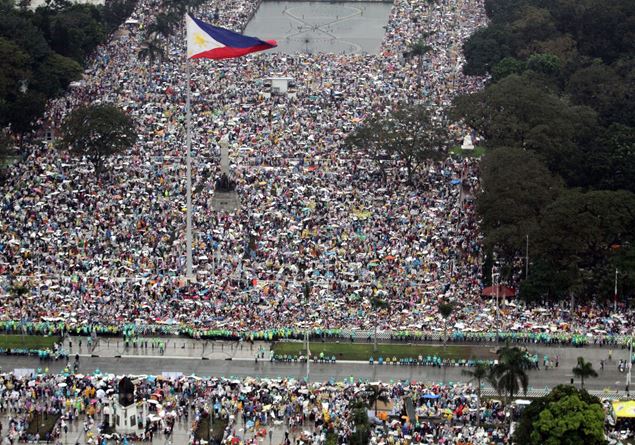It came from the most Catholic continent in the world, as regards numbers, but showed a marked predilection for that where the followers of Jesus are a small flock. Pope Bergoglio – who of himself said to come “almost from the end of the world” – throughout his life has cultivated an impossible dream: to visit China, the land that the great Jesuit Matteo Ricci called “end of the world”. As a young man, it is known, Bergoglio nourished his lively desire to become a missionary and, in the footsteps of Francesco Saverio, evangelize Japan. Then things went differently, but in the deep of the heart of the Argentine Pope the yearning for the mission and passion for Asia have remained intact.
The numerous and significant journeys made by Pope Francis in the neighbor and back in East (United Arab Emirates, Bangladesh, Myanmar, Thailand, Japan, Filippines, South Korea and Indonesia, just to remember the main ones) are placed in the wake of the help of John Paul II who in “Get up, let’s go” He wrote: “Asia: here is our common task for the third millennium”. With his prophetic choices, especially in the appointment of cardinals from the “suburbs”, Pope Bergoglio educated the Church to widen his gaze at 360 degrees, to consider the “sisters” of Asia – numerically not very consistent, but lively as regards the testimony of faith – no less important than those of ancient tradition.
Well. Today, as he observed AsiaNewsfor the first time in history he sits in conclave more than a truly papable Asian cardinal. It is perhaps time, therefore, that we know better the contribution of Asian churches to the life of global Catholicity. On the basis of the experiences conducted on numerous trips to the East over several years, it seems to me at least four precious pearls that the churches of those latitudes bring as a gift to the universal church.
Firstly, the ability to testify faith in delicate political contexts, where religious freedom is not guaranteed or is only partially. I think of Myanmar, Vietnam and in particular China. Even today, living the Gospel to those latitudes can take on the forms of heavy discrimination or, even, of martyrdom, albeit to a lesser extent of the past. And the martyrdom, wrote Francesco in the bubble of the jubilee, represents the most convincing form of testimony of Christian hope.
A second dimension is the constant encounter/clash with ethnic, cultural and religious diversity. The presence in the East of the most ancient religious traditions, to which billions of people still adhere, inevitably force those who profess their faith in Christ to measure themselves with women and men who yearn in mystery through other ways and call God with different names. All this educates Christians to dialogue, to the respectful confrontation with the other: a particularly precious treasure today, in times of globalization, in which more and more the “different” we have at home.
Still. The Asia is Tokyo, Shanghai, Jelly, Manila, Dhaka, Mumbai … metropolis with tens of millions of inhabitants, very powerful transformations engines in various aspects. From 2009 to today half of the world population lives in an urban context: a trend that is progressively accentuating. Living in a megalopolis means perceiving on one’s own skin a multiplicity of social problems that intertwine and experimenting with the countless forms that assumes what Pope Francis denounced as the “culture of waste”. This talent is also something that the Asian Church shares with the other “sisters” of the rest of the world.
In the end. From Christian communities such as Korean, Burmese, Indonesian, Hong Kong and others, we receive the testimony of a missionary fervor (even outside its national borders) inversely proportional to the numerical consistency of the faithful who make them up. An exquisitely evangelical message, according to which, to use Bergoglio’s words, “nobody is so poor as not to have something to give”.
Beyond that in the next few days a Pope is elected or not from the East, the new ecclesial scenarios (effectively synthesized by the unprecedented Conclave 2025) seem in any case to confirm the truth of what Pope Francis confided on two occasions to Cardinal Luis Antonio Gokim Tagle, former archbishop of Manila: “The future of the Church is in Asia”.
In the photo, the mass celebrated by Pope Francis in January 2015 in Manila


